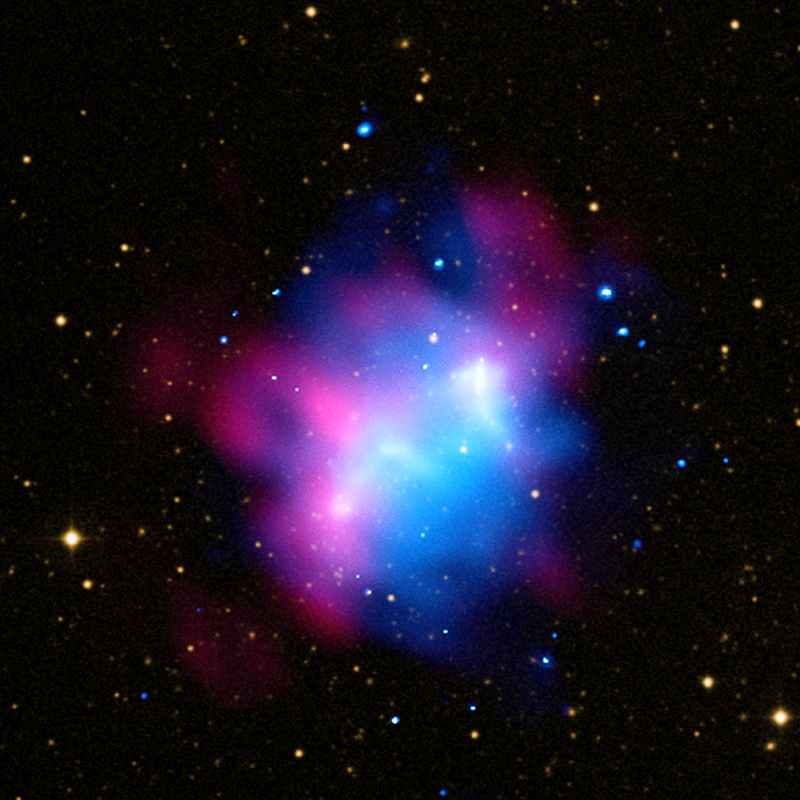
 Credit: X-ray (NASA/CXC/SAO/M.Markevitch); Radio (TIFR/GMRTSAO/INAF/R.Cassano, S.Giacintucci); Optical (DSS)
Credit: X-ray (NASA/CXC/SAO/M.Markevitch); Radio (TIFR/GMRTSAO/INAF/R.Cassano, S.Giacintucci); Optical (DSS)
Switch on the Radio
Clusters of galaxies are the largest known bound objects, and the arrangement of galaxy clusters defines the body of Universe. Clusters move through space held together by the gravitational force of their large amounts of hot intracluster gas and dark matter. Chances of meeting another cluster blindly moving through the dark Universe are pretty good, and the collision of one cluster with another produces outstanding fireworks, the best example of which is probably the so-called Bullet Cluster. Now a new detailed study of the radio and optical emission from clusters of galaxies with India's Giant Metrewave Radio Telescope and the Chandra X-ray observatory are showing how collisions of galaxies produce hot, X-ray emitting gas and giant radio halos. The image above shows a portion of the galaxy cluster Abell 1758 which reveals the results of a collision between two smaller clusters. In this image radio emission seen by the GMRT is shown in pink and X-ray emission seen by Chandra is shown in blue. Optical emission from the stars in the galaxies which compose the cluster is shown in gold. This study suggests that turbulence produced by the collisions of galaxies help accelerate subatomic particles to high energies helping to produce both radio and X-ray emission.
Published: September 6, 2010
<
HEA Dictionary ● Archive
● Search HEAPOW
● Other Languages
● HEAPOW on Facebook
● Download all Images
● Education ● HEAD
>

Each week the HEASARC
brings you new, exciting and beautiful images from X-ray and Gamma ray
astronomy. Check back each week and be sure to check out the HEAPOW archive!
Page Author: Dr. Michael F. Corcoran
Last modified Monday, 26-Feb-2024 17:34:10 EST


